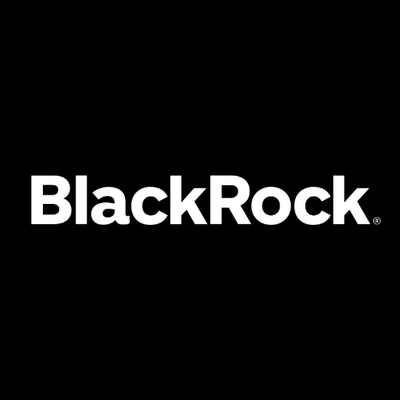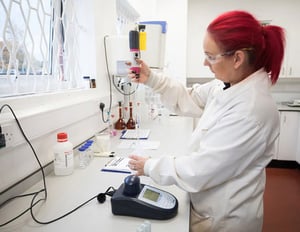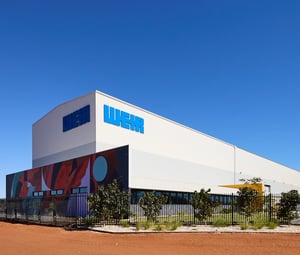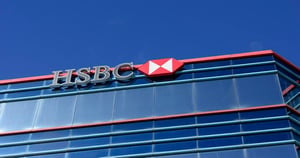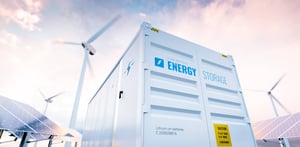BlackRock Latin American Investment Trust plc (LON:BRLA) has announced its half yearly financial results for period ended 30 June 2021.
To learn more about the BlackRock Latin American Investment Trust plc please follow this link: blackrock.com/uk/brla
PERFORMANCE RECORD
| As at 30 June 2021 (unaudited) | As at 31 December 2020 (audited) | |
| Net assets (US$’000)1 | 245,480 | 234,151 |
| Net asset value per ordinary share (US$ cents) | 625.27 | 596.42 |
| Ordinary share price (mid-market) (US$ cents)2 | 565.01 | 552.93 |
| Ordinary share price (mid-market) (pence) | 409.00 | 404.50 |
| Discount3 | 9.6% | 7.3% |
| Performance (with dividends reinvested)5 | ||
| Net asset value per share (US$ cents)3 | 7.4% | –14.5% |
| Ordinary share price (US$ cents)2,3 | 4.9% | –9.3% |
| Ordinary share price (pence)3 | 3.8% | –12.1% |
| MSCI EM Latin America Index (Net return, on a US Dollar basis)4 | 8.9% | –13.8% |
| For the six months ended 30 June 2021 (unaudited) | For the six months ended 30 June 2020 (unaudited) | Change % | |
| Revenue | |||
| Net profit after taxation (US$’000) | 3,414 | 1,119 | +205.1 |
| Revenue profit per ordinary share (US$ cents) | 8.70 | 2.85 | +205.1 |
| Dividends per ordinary share (US$ cents) | |||
| Quarter to 31 March | 6.97 | 4.59 | +51.9 |
| Quarter to 30 June | 7.82 | 5.57 | +40.4 |
| Total dividends paid and payable (US$ cents) | 14.79 | 10.16 | +45.6 |
Source: BlackRock.
1 The change in net assets reflects the market movements during the period and dividends paid.
2 Based on an exchange rate of $1.3814 to £1 at 30 June 2021 and $1.3669 to £1 at 31 December 2020.
3 Alternative Performance Measures, see the Glossary contained within the Company’s Half Yearly Financial Report for the six months to 30 June 2021.
4 The Company’s performance benchmark (the MSCI EM Latin America Index) may be calculated on either a Gross or a Net return basis. Net return (NR) indices calculate the reinvestment of dividends net of withholding taxes using the tax rates applicable to non-resident institutional investors, and hence give a lower total return than indices where calculations are on a Gross basis (which assumes that no withholding tax is suffered). As the Company is subject to withholding tax rates for the majority of countries in which it invests, the NR basis is felt to be the most accurate, appropriate, consistent and fair comparison for the Company.
5 Percentage comparisons at 30 June 2021 are for the six months from 31 December 2020 and percentage comparisons at 31 December 2020 are for the 12 months from 31 December 2019.
PERFORMANCE FROM 31 DECEMBER 2015 TO 30 JUNE 2021
Share price | NAV | MSCI EM Latin America Index (net basis) | |
| 2016 | 22.2 | 25.2 | 31.0 |
| 2017 | 31.3 | 29.0 | 23.7 |
| 2018 | -6.9 | -5.4 | -6.6 |
| 2019 | 22.0 | 18.2 | 17.5 |
| 2020 | -9.3 | -14.5 | -13.8 |
| 2021* | 4.9 | 7.4 | 8.9 |
Sources: BlackRock Investment Management (UK) Limited and Datastream.
Performance figures are calculated in US Dollar terms with dividends reinvested.
* Six month performance to 30 June 2021.
CHAIRMAN’S STATEMENT
Dear Shareholder
I am pleased to present the Half Yearly Financial Report to shareholders for the six months ended 30 June 2021.
Overview and performance
Against a backdrop of political disruption and COVID-19 driven economic volatility and social fragility, markets in Latin America outperformed the MSCI Emerging Markets Index over the first half of 2021, with the MSCI EM Latin America Index up by 8.9%1 compared to a 7.4%1 rise in the MSCI Emerging Markets Index. Markets in Brazil and Mexico performed most strongly, up by 10.6%1 and 13.7%1 respectively. In contrast the Andean countries (Colombia, Peru, Chile) largely underperformed the benchmark. The Company’s net asset value per share increased by 7.4% over the period (underperforming the benchmark by 1.5%). The underperformance was largely driven by stock specific factors as the portfolio managers moved to reduce country risk in the portfolio as political unrest escalated. In Sterling terms the NAV rose by 6.3% over the same period and the benchmark rose by 7.7%. The share price rose by 4.9% in US Dollar terms (3.8% in Sterling terms).
Additional information on the main contributors to and detractors from performance for the period under review is given in the Investment Manager’s report below.
Revenue return and dividends
Revenue return for the six months ended 30 June 2021 was 8.70 cents per share (2020: 2.85 cents per share). The increase of 205.1% was largely due to a lower level of dividends received in the prior period for the six months ended 30 June 2020 when the COVID-19 pandemic first took hold. When compared to the less volatile pre-pandemic trading environment of 2019, the current period revenue return per share was 9.8% higher than the 7.92 cents per share recorded for the six months ended 30 June 2019.
The Company has declared dividends totalling 27.69 cents per share in respect of the twelve months to 30 June 2021 representing a yield of 4.9%. Under the Company’s dividend policy, dividends are calculated and paid quarterly, based on 1.25% of the US Dollar NAV at close of business on the last working day of March, June, September and December respectively; additional information in respect of the payment timetable is set out in the Annual Report and Financial Statements. Dividends will be financed through a combination of available net income in each financial year and revenue and capital reserves.
The dividends paid and declared by the Company in the last twelve months have been funded from current year revenue and brought forward revenue reserves. As at 30 June 2021, a balance of US$0.8 million remained in revenue reserves. Dividends will be funded out of capital reserves to the extent that current year revenue and revenue reserves are fully utilised. The Board believes that this removes pressure from the investment managers to seek a higher income yield from the underlying portfolio itself which could detract from total returns. The Board also believes the Company’s dividend policy will enhance demand for the Company’s shares and help to narrow the Company’s discount, whilst maintaining the portfolio’s ability to generate attractive total returns. It is promising to note that since the dividend policy was introduced in July 2018, the Company’s discount has narrowed from 14.9% as at 1 July 2018 to 9.6% as at 30 June 2021.
Dividends declared in respect of the year to 30 June 2021
| Dividend rate (cents per share) | Announcement date | Pay date | |
| Quarter to 30 September 2020 | 5.45 | 1 October 2020 | 9 November 2020 |
| Quarter to 31 December 2020 | 7.45 | 4 January 2021 | 8 February 2021 |
| Quarter to 31 March 2021 | 6.97 | 1 April 2021 | 10 May 2021 |
| Quarter to 30 June 2021 | 7.82 | 1 July 2021 | 6 August 2021 |
| Total | 27.69 |
Discount management
The Directors continue to monitor the discount at which the ordinary shares trade to their prevailing NAV and in the six months ended 30 June 2021 the cum–income discount on the ordinary shares in Sterling terms has averaged 9.4% and ranged between 5.4% and 14.2%. The Board tries to reduce discount volatility by offering shareholders a discount control mechanism covering the four years to 31 December 2021 whereby shareholders are offered a tender for 24.99 per cent of the shares in issue excluding treasury shares (at a tender price reflecting the latest cum-income NAV less 2 per cent and related portfolio realisation costs) in the event that the continuation vote to be put to the Company’s AGM in 2022 is approved, where either of the following conditions have been met:
(i) the annualised total NAV return of the Company does not exceed the annualised benchmark index (being the MSCI EM Latin America Index) US Dollar (net return) by more than 100 basis points over the four year period from 1 January 2018 to 31 December 2021 (the Calculation Period); or
(ii) the average daily discount to the cum-income NAV exceeds 12 per cent as calculated with reference to the trading of the shares over the Calculation Period.
In respect of the above conditions, the Company’s annualised total NAV return on a US Dollar basis for the 42 months from 1 January 2018 to 30 June 2021 was +0.74%, underperforming the annualised benchmark return for the same period of +0.85% by 0.11%. The cum-income discount of the Company’s ordinary shares has averaged 11.8% for this period and ranged from a discount of 2.0% to 20.6%, ending on a discount of 9.6% at 30 June 2021. On these metrics a tender would be triggered if the annualised NAV performance relative to the benchmark and the average discount calculations for the 42 months to 30 June 2021 remain unchanged over the remaining six months to 31 December 2021.
The making of any tender offer pursuant to the above will be conditional upon the Company having the required shareholder authority or such shareholder authority being obtained, the Company having sufficient distributable reserves to effect the repurchase and, having regard to its continuing financial requirements, sufficient cash reserves to settle the relevant transactions with shareholders, and the Company’s continuing compliance with the Listing Rules and all other applicable laws and regulations. The Company may require a minimum level of participation in any such tender offer to be met, failing which the tender offer may be declared void.
Share capital
As noted above, the Directors are mindful of the Company’s discount to NAV. The Board monitors the Company’s share rating closely, and is committed to making share purchases where appropriate to manage the discount. The Company has not bought back any shares during the six months ended 30 June 2021 and up to the date of publication of this report (no shares were bought back in the year to 31 December 2020).
Outlook
As vaccination rates ramp up globally and economies start to reopen, a resurgence in consumer demand is likely to boost global economic growth rates. As significant producers to the world of vital food, timber, minerals and oil supply, the Latin American region is well placed to benefit from this trend. The Company’s portfolio managers are confident that there are many compelling investment opportunities in the region (with equity valuations remaining cheap relative to historic levels and global peers) and believe that current operating momentum will lead to upwards earnings revisions from portfolio companies. The risk of a significant increase in inflation and continued political disruption have the potential to derail this growth momentum; however, overall, the portfolio managers believe that higher external growth from US and China, buoyant commodity prices and a liquidity boost from supportive fiscal policies in developed markets are attractive tailwinds that should support a resurgence in Latin American equities over the coming year.
Carolan Dobson
Chairman
17 September 2021
1 Calculations on a US Dollar net return basis with dividends reinvested.
INVESTMENT MANAGER’S REPORT
Latin American equities outperformed the MSCI Emerging Markets Index in the first half of 2021 and over the last twelve months ending 30 June 2021. Both Brazil and Mexico have posted region-leading returns over the past year, while the Andean countries have largely underperformed. At the sector level, Energy, Discretionary and Materials were the notable performing sectors in the first half of 2021. Markets in Latin America favoured smaller companies in the first half of 2021 as small caps outperformed large. In Brazil, quality, size and sentiment were the best performing factors, whereas in Mexico, low volatility worked best. Despite the recent outperformance, Latin American equities currently trade at an attractive discount to the rest of the emerging markets based on the median price to forward earnings multiple – in fact the difference in valuation is one of the widest variances in the last 25 years. At the stock level, we see positive trends for earnings revisions as economic recovery continues in the region and vaccinations slowly get distributed.
Latin America is a region where political risk creates several challenges and opportunities for investors. For 2021, politics has been more of a challenge. Political uncertainty has been seriously disruptive in Peru and problematic in Chile. Colombia has also seen public rioting in relation to proposed tax reform. Many governments are under pressure to take actions to stabilize deteriorated fiscal accounts. Doing this while the pandemic is still an issue, and social conditions are fragile, is politically difficult. With upcoming Presidential elections in Chile in the second half of 2021, and Brazil in 2022, we expect politics to have an important influence on markets in the near term. Our strategy has been to reduce country risk in the portfolio given bifurcated and polarising election outcomes, allowing for stock specific factors to drive performance.
| MSCI Indices | ||||
% Price change | % Return (with dividends reinvested)1 | Local currency (% vs. USD) | Local indices (% change) | |
| Argentina | –0.5 | –0.5 | –13.8 | +21.8 (MERVAL) |
| Brazil | +7.9 | +10.6 | +4.3 | +6.5 (Ibovespa) |
| Chile | –0.6 | +0.3 | –3.4 | +3.4 (IGPA) |
| Colombia | –20.0 | –19.6 | –9.5 | –11.8 (COLCAP) |
| Mexico | +12.7 | +13.7 | –0.1 | +15.4 (IPC) |
| Peru | –18.9 | –18.5 | –6.9 | –9.1 (S&P/BVL) |
| Indices | ||||
% Price change | % Return (with dividends reinvested)1 | Commodity/Index | Commodity prices (% change) | |
| MSCI EM Latin America | +6.9 | +8.9 | CRB Index2 | +27.2 |
| MSCI Emerging Asia | +5.3 | +6.0 | Oil (WTI)3 | +50.6 |
| MSCI Emerging Markets | +6.5 | +7.4 | Gold | –6.6 |
| MSCI World | +12.2 | +13.0 | Copper | +25.4 |
| S&P 500 | +14.4 | +15.0 | Corn | +70.0 |
| MSCI Europe | +13.6 | +11.8 | Soybeans | +14.2 |
1 MSCI total return indices are net of withholding taxes.
2 Commodity Research Bureau Index.
3 West Texas Intermediate.
Sources: Bloomberg and MSCI for the six months to 30 June 2021.
Portfolio review
During the first half of 2021 the Company’s NAV rose by 7.4%, underperforming the Company’s benchmark (the MSCI EM Latin America Index) which rose by 8.9% over the same time period (all calculations in US Dollar terms with dividends reinvested). A graph showing the performance of the Company’s NAV and share price in comparison to the benchmark is included on page 8 of the Half Yearly Financial Report for the six months ended 30 June 2021 which can be found on the Company’s website at www.blackrock.com/uk/brla.
| Top contributors: | Total effect (bps): | Top detractors: | Total effect (bps): |
| Cemex | +84.7 | Centrais Elétricas Brasileiras (Eletrobras) | –59.8 |
| Santos Brasil | +80.7 | BB Seguridade Participações | –48.5 |
| Ternium | +68.8 | PagSeguro Digital | –47.0 |
| Magazine Luíza | +48.5 | Televisa | –44.3 |
| Bancolombia | +45.6 | Petróleo Brasileiro (Petrobrás) | –43.6 |
Source: BlackRock.
In Brazil, we see benefits to the economy from the ongoing local re-opening and global reflation trades. The Brazilian Real appears to be attractively valued and should be supported in the near-term from continued interest rate hikes from the Brazilian central bank. We expect economic activity to continue a gradual recovery during the second half of 2021 but rising inflation and interest rates, tighter finance conditions, and heightened policy and political uncertainty may cap the upside. The outlook for inflation remains unfavourable, with short-term inflationary pressures having proven persistent. The risks for both 2021 and 2022 inflation remain tilted to the upside. One thing made clear over the past months is that politics – as well as the related fiscal risks – will be a key driver of moves in local financial markets in the mid-term. With the president, congress and the judiciary all seemingly focused on institutional battles, much needed economic reforms are likely to be put on the backburner and politicians may be slow to address emerging problems like the threat of electricity shortages. Moreover, fiscal risks are likely to build in the run-up to the election in October 2022 – and possibly after it – as neither President Bolsonaro nor his main rival, Lula, seem overly committed to fiscal discipline.
In Mexico, we remain balanced in our view for recovery in economic growth with a strong bias toward external sectors. The country’s link to the US is strong, but the domestic part of the economy should continue to face growth challenges driven by the reluctance in private investment, as well as political and health uncertainty. Mid-term elections were held in the second quarter of 2021, with results mostly in line with the pre-election polls. Ruling party Morena had mixed results, helping to avoid the market’s concern of granting President López Obrador greater representation in Congress to allow for constitutional reform. Despite a more challenging scenario in Congress, the federal government continues to move ahead with a nationalistic agenda for the energy sector, challenging both existing and future private investments as well as adding to bilateral tensions with the US given both governments’ opposing environmental views. Despite the political sideshow, economic momentum continues in a favourable direction and the local currency also has room to appreciate given fiscal austerity and rising domestic interest rates.
For Chile, the fiscal uncertainty from the constitutional convention has added to the effect of recent hawkishness from the central bank, driven by an output gap that is closing and inflation close to target. Roughly half the population is already vaccinated and spending impulse from the recent pension withdrawals and other fiscal measures should keep the economy well supported for the rest of the year.
Contributors to relative returns
At the stock level, the largest positive contributors to relative returns were holdings in Cemex, Ternium and Santos Brasil. Mexican cement producer, Cemex, increased its full year guidance for profitability in the first half of the year as signs of robust cement demand persist from strong growth related to the residential housing market in the company’s main operations in southern United States as well as expectations for buoyant infrastructure spending in the US and Mexico. Ternium is a non-index stock and a leading Latin American steel producer that has benefited from rising steel prices in North America. The company has been investing in a new Mexican growth platform and has taken market share from weaker domestic competitors. Santos Brasil is a Brazilian port operator that received a favourable renewal of an operating contract with a major global shipping company at a substantial increase in prices in the first half of this year.
Detractors from relative returns
The underweight portfolio positioning in respect of two state-owned companies in Brazil, namely Petróleo Brasileiro (Petrobrás) and Centrais Elétricas Brasileiras (Eletrobras) detracted significantly from the Company’s relative returns. Both of these stocks suffered from unexpected changes at key management positions during the first half of 2021 which induced fears of increased government interference in the respective company’s operations. The outgoing management teams of both companies were well regarded by investors and the abrupt changes at the CEO level created uncertainty regarding the ability for these companies to continue to generate value for shareholders. While the stocks have bounced back to an extent off their near-term valuation lows, responding positively in spite of what we interpreted as bad news, we are of the view that political risk will remain elevated for state-owned companies ahead of the Brazilian presidential election in 2022 and would argue there are greater investment opportunities elsewhere. Finally, shares of Mexican media firm, Televisa, spiked in the first half of the year on the back of the announcement that the company agreed to combine its content and media assets with its US partner, Univision, in order to create a combined entity which would be the largest Spanish-language media company in the world, providing the potential to unlock value for Televisa’s shareholders. The Company’s lack of holding in this security compared to the benchmark led to underperformance on a relative basis.
Portfolio positioning
Over the six months ending 30 June 2021, we notably managed our Brazilian exposure and built up positions in Chile and Mexico.
During the period, we added to Brazilian retail company, Via Varejo, as the company saw triple digit growth in online sales and continuation of favourable demand in offline channels despite withdrawal of government stimulus. We reduced exposure to Brazilian banks earlier in the period. In particular, we reduced exposure to Banco Bradesco as the bank faces incremental competition from fintech challengers and increased funding costs from rising domestic interest rates. Additionally, we sold our holding of Banco do Brasil as the state-owned company faced pressure from the government related to their recently announced cost cutting plan. Later in the period we initiated a position in Credicorp, a Peruvian financial services company, on the view that political uncertainty is creating opportunity for long term alpha generation given depressed valuations. The country was in the midst of a tightly contested Presidential election which created uncertainty and caused sharp depreciation of the currency, despite favourable external conditions from high metal prices. We believe fears of radical changes to the favourable institutional framework of the company are overdone and hence look to add exposure on political uncertainty induced volatility. We also purchased Chilean department stores company, Falabella, given the company’s position to benefit from gradual economic reopening and improving consumption trends. We sold our holding in Santos Brasil, a Brazilian logistics company, to take profits following the stock’s outperformance driven by strength in import and export of commodities.
The Company ended the period being overweight to Chile and Mexico, whilst being underweight to Colombia and Peru. At the sector level, we are overweight industrials and consumer discretionary, and underweight consumer staples and utilities.
Outlook
We expect economic activity to enjoy positive momentum in the region during the second half of 2021 as vaccination rates accelerate and economies reopen amid fiscal and monetary stimuli. Despite the risk posed by new variants of the virus, the appetite for new mobility restrictions seems low. We see upside risks to GDP growth forecasts for most of the region given robust global demand for bulk and soft commodities, for which many Latin countries will benefit from given the abundance of natural resources in Latin America’s export mix. Chile, Brazil and Mexico have shown improving economic momentum from vaccine distributions and increased mobility. Argentina and Peru are likely to be the laggards in the region amid high political uncertainty.
In Brazil, the economic recovery resumed after a relatively brief interruption following the Carnival holiday due to the strong pandemic rebound in March and part of April. Industrial production was stable in June after rising in May, yet it ended the second quarter of 2021 down from the first quarter, dragged by the larger drops in March and April. It is possible that the slower pace of recovery in the industrial segment is partially explained by insufficient inventories and other temporary bottlenecks and not simply weak demand, as confidence indicators have been recovering since April/May. Retail sales data continues to recover throughout the second quarter however the shock from late in the first quarter has not been fully assimilated yet. Even though retail sales and services grew in April and May, they are still below February 2021 levels. Still, as authorities continue to reduce movement restrictions in most states amid record vaccination rates, the expectation is that the recovery will gain pace during the second half of the year, particularly in services. As of early August, new daily COVID-19 cases and deaths are at their lowest levels since December and January, respectively, and Delta counts remain relatively low, although there is some concern that the more contagious strain could still create a new wave. Nearly 50% of the population has received at least one dose of the vaccine, while 20% is fully immunized. Despite the expected near term uplift from economic normalisation on the back of increased vaccine distribution in Brazil, the country faces a number of headwinds in 2022 including uncertainty around a polarised Presidential election next year, stubbornly high inflation, lingering pressure from high levels of government indebtedness and questions regarding the government’s willingness to maintain credible fiscal policy.
In Mexico, quarterly GDP reports showed sequential expansion and confirmed the significant recovery in the services sector. On the other hand, primary and industrial activities grew strongly supported by low base effects from the pandemic shock a year ago. We think there might be some upside risks in the second half of the year as the economy benefits from close proximity to the United States, supporting Mexico’s manufacturing export sector. Although the main risk to our view continues to be the current wave of new COVID-19 cases, we see limited risks from this as the government has ruled out imposing new mobility restrictions while it continues with its vaccination roll-out efforts amid fewer deaths than in previous waves. During July, some high-frequency indicators such as Google’s mobility reports and OpenTable reservations continued to improve. Hence, services like sports, entertainment and restaurants, which are still the most affected sectors, might continue to gradually recover. Despite our optimism, we acknowledge risks remain around the deterioration of the COVID-19 backdrop, high inflation and rising rates which could cap the upside.
In Chile, we have seen a consistent trend of upwardly revised growth forecasts and Chile should be one of the first countries in the region to see GDP return to levels above pre-pandemic readings. We expect additional sequential growth in the second half of the year, as economic activities continue to reopen as cases decline and the vaccination programme advances. The government is implementing a cash transfer program starting in June that is worth 1 percentage point of GDP per month until September, implying that the balance of risks to growth forecast remains tilted to the upside benefited by strong levels of consumption. Coming from such high levels, we believe that next year’s growth could slow as fiscal stimulus is reduced and the chance for political uncertainty to negatively impact investment increases as the country enters a highly contested presidential election in the fourth quarter of 2021.
In Colombia, we see a mixed balance of risks between the economic reopening and social unrest but generally expect market consensus estimates for growth to keep moving higher. Activity data recently released showed that the protests over tax reform that took place during May had a smaller-than-expected economic impact. Moreover, leading indicators suggest that May’s temporary social disruptions have been overcome through June and July and the recovery process remains on track. The reopening of the economy, fiscal stimulus and a rebound of oil production should help sustain the recovery.
In Argentina, economic activity has been weaker than seen elsewhere because of lockdowns in the first half of the year. However, economic activity is likely to rebound sequentially going forward as restrictions have started to be lifted. In fact, manufacturing and construction have posted sequential monthly expansions recently, which is an encouraging leading indicator. Macroeconomic imbalances continue to pose challenges for a sustained recovery in the country and in this context the country is also facing legislative elections in the fourth quarter that could impact business confidence.
Peru is likely to be the laggard of the region. The recovery already started to lose momentum through the second quarter of the year, with an estimated contraction amid high political uncertainty generated by the new Castillo administration that was inaugurated on 28 July. We expect business confidence to deteriorate and investment and consumption decisions to be put on hold. The first actions taken by the Castillo administration appear to suggest that moderation from radical campaign rhetoric is unlikely for now. Instead, the administration seems headed towards a confrontation with Congress in its push to hold a Constitutional Assembly. We expect capital outflows to persist and weakening fundamentals to lead to rating downgrades. It is noteworthy to mention that a great deal of uncertainty has already been reflected in weak currency and equity prices which could present a long term opportunity for patient investors amid current discounted valuation of asset prices.
Reasons to invest in Latin America
It has been a tough period for Latin America, with many countries hit hard by the COVID-19 crisis. However, we see a strong case for better times ahead for the region as the world rebuilds after the pandemic, and Latin America may be one of the most important beneficiaries of recovery in the global economy.
As the region rebuilds, it will have some important tailwinds. Perhaps the most significant is rising commodity prices. Vast stimulus in the US and economic recovery across the world has pushed up demand for commodities after a period of tight supply. Global governments have ambitious, commodity-heavy infrastructure plans, particularly for green energy development. Latin America is also one of the most abundant regions in the world for lithium, iron ore and copper with some of the longest-life reserves at a low cost in Brazil, Chile and Peru.
There are also broader factors that should support economic growth. Across Latin America, a growing middle class is fuelling domestic consumption and after a brief hiatus from the pandemic, this spending appears to be resuming. As businesses in the US look to diversify their supply chains, opportunities are being created in Mexico, particularly along the northern border, in the manufacturing sector.
Importantly, a rich seam of new companies listing on the stock market is creating more opportunities all the time. The buoyancy of the Brazilian IPO market is perhaps the best example. 2020 was a bumper year for Brazilian IPOs. 28 companies listed on the main exchange, raising BRL$43.7 billion (US$8.3 billion) in spite of the pandemic. This was almost four times the previous year’s figure and the highest level since the giddy pre-crash optimism of 2007. This year looks set to be even more promising; over 40 companies have already said they want to list on Sao Paulo’s B3 exchange this year. There are sound reasons for this, with excess global liquidity, favourable macroeconomic conditions, and increased financial awareness among Brazilian investors, all supporting new issuance in Brazil. This is bringing new sectors and more choice for investors in the region. In the Company, we have exposure to structural growth themes in the region including healthcare, e-commerce and convenience stores.
Against this positive backdrop, we see anecdotal evidence that investors are moving away from China – which has a lot of technology names – to more cyclical markets. Latin American markets, with their focus on materials, energy and financials, are a key beneficiary. For example, the weight of cyclical sectors such as Energy and Materials in emerging market benchmarks peaked at 37% at the end of 2007, while at the end of 2020 these sectors only represent 13% of the global emerging market index. This has been offset by Consumer Discretionary and Technology sectors becoming over half of emerging market indices from a low of 26% at the end of the 2000’s. Furthermore, regulatory scrutiny has been increasingly punitive on Chinese tech companies as the government looks to address social imbalances in the country to promote a harmonious distribution of wealth. We believe that Latin America is a prime destination for a rotation away from the Asia tech complex for a number of reasons. Latin America is lightly represented in emerging market benchmarks and has generally been under-owned, so it only takes a small change in sentiment to have a significant impact. Furthermore, relative valuations in Latin America have rarely been cheaper as the region trades at a large discount to its own history, as well as compared to emerging market and developed market peers, when looking at traditional valuation metrics such as price-to-earnings or price-to-book value multiples. As a result, we believe Latin American equities create an attractive investment destination given the under-valued and under-owned characteristics of the asset class. Given the wide valuation discounts in markets and cyclical benefits to the economies, we expect more and more investors to rediscover the huge opportunities in this fascinating region.
Ed Kuczma and Sam Vecht
BlackRock Investment Management (UK) Limited
17 September 2021
To learn more about the BlackRock Latin American Investment Trust plc please follow this link: blackrock.com/uk/brla
PORTFOLIO ANALYSIS as at 30 June 2021
GEOGRAPHIC WEIGHTING (GROSS MARKET EXPOSURE) VS MSCI EM LATIN AMERICA INDEX
% of net assets | MSCI EM Latin America Index % | |
| Brazil | 69.6 | 66.5 |
| Mexico | 25.6 | 22.2 |
| Chile | 10.1 | 5.6 |
| Argentina | 3.1 | 1.6 |
| Peru | 1.9 | 2.3 |
| Panama | 1.1 | 0.0 |
| Colombia | 0.0 | 1.8 |
Sources: BlackRock and MSCI.
SECTOR ALLOCATION (GROSS MARKET EXPOSURE) VS MSCI EM LATIN AMERICA INDEX
% of net assets | MSCI EM Latin America Index % | |
| Materials | 27.9 | 25.1 |
| Financials | 24.9 | 23.4 |
| Industrials | 10.1 | 5.7 |
| Consumer Discretionary | 9.9 | 6.0 |
| Energy | 8.3 | 9.8 |
| Consumer Staples | 7.8 | 14.5 |
| Health Care | 6.4 | 2.7 |
| Communication Services | 6.2 | 6.1 |
| Information Technology | 4.6 | 1.8 |
| Real Estate | 3.2 | 0.6 |
| Utilities | 2.1 | 4.3 |
Sources: BlackRock and MSCI.
TEN LARGEST INVESTMENTS
1 Vale (2020: 3rd)
Materials
Market value – American depositary share (ADS): US$27,676,000
Share of investments: 10.1% (2020: 8.1%)
is one of the world’s largest mining companies, with other business in logistics, energy and steelmaking. Vale is the world’s largest producer of iron ore and nickel but also operates in the coal, copper, and manganese and ferro-alloys sectors.
2 Petrobrás (2020: 1st)
Energy
Market value – American depositary receipt (ADR): US$13,055,000
Market value – Preference shares ADR: US$7,220,000
Share of investments: 7.4% (2020: 9.2%)
is a Brazilian integrated oil and gas company, operating in the exploration and production, refining, marketing, transportation, petrochemicals, oil product distribution, natural gas, electricity, chemical-gas and biofuel segments of the industry. The company controls significant assets across Africa, North and South America, Europe and Asia, with a majority of production based in Brazil.
3 Banco Bradesco (2020: 2nd)
Financials
Market value – ADR: US$19,914,000
Share of investments: 7.3% (2020: 8.5%)
is one of Brazil’s largest private sector banks. The company divides its operations in two main areas – banking services and insurance services, management of complementary private pension plans and savings bonds.
4 América Móvil (2020: 5th)
Communication Services
Market value – ADR: US$13,391,000
Share of investments: 4.9% (2020: 4.2%)
is the leading provider of integrated telecommunications services in Latin America, with wireless and fixed-line presence in Latin America, the US, and Central and Eastern Europe. The company has the largest wireless subscriber base in the world outside of China and India.
5 B3 (2020: 4th)
Financials
Market value – Ordinary Shares: US$10,852,000
Share of investments: 4.0% (2020: 4.9%)
is a stock exchange located in Brazil, providing trading services in an exchange and OTC environment. B3’s scope of activities include the creation and management of trading systems, clearing, settlement, deposit and registration for the main classes of securities, from equities and corporate fixed income securities to currency derivatives, structured transactions and interest rates, and agricultural commodities. B3 also acts as a central counterparty for most of the trades carried out in its markets and offers central depository and registration services.
6 Grupo Financiero Banorte (2020: 13th)
Financials
Market value – Ordinary Shares: US$9,381,000
Share of investments: 3.4% (2020: 2.5%)
is a Mexican banking and financial services holding company and is one of the largest financial groups in the country. It operates as a universal bank and provides a wide array of products and services through its broker dealer, annuities & insurance companies, retirements savings funds (Afore), mutual funds, leasing & factoring company and warehousing.
7 Walmart de México y Centroamérica (2020: 7th)
Consumer Staples
Market value – Ordinary Shares: US$8,508,000
Share of investments: 3.1% (2020: 3.5%)
is the Mexican and Central American division of Wal-Mart Stores Inc, with operations in Mexico, Guatemala, El Salvador, Honduras, Nicaragua and Costa Rica. The company operates eight brands in the region, covering the discount, winery, supermarket and supercenter segments.
8 NotreDame Intermédica Participações (2020: 12th)
Health Care
Market value – Ordinary Shares: US$8,396,000
Share of investments: 3.1% (2020: 2.5%)
is a Brazil-based healthcare company that owns more than 15 hospitals, 20 emergency rooms, 10 units of preventive medicine and 65 clinical centres. The company offers health services, dental services, which includes dental plans, preventive dentistry and other specialized services such as child surgery or occupational health.
9 Cemex (2020: 10th)
Materials
Market value – ADR: US$8,276,000
Share of investments: 3.0% (2020: 3.1%)
is a Mexican multinational building materials company and is one of the world’s largest global building materials companies. It manufactures and distributes cement, ready-mix concrete and aggregates in more than 50 countries.
10 Via Varejo (2020: 28th)
Consumer Discretionary
Market value – Ordinary Shares: US$7,337,000
Share of investments: 2.7% (2020: 1.6%)
is the largest electronics and furniture retailer in Brazil. The company owns and distributes via Casas Bahia and Pontofrio brands with more than 1,000 stores spread throughout the country.
All percentages reflect the value of the holding as a percentage of total investments. For this purpose, where more than one class of securities is held, these have been aggregated. The percentages in brackets represent the value of the holding as at 31 December 2020.
Together the ten largest investments represent 49.0% of the total investments (ten largest investments as at 31 December 2020: 51.8%).
PORTFOLIO OF INVESTMENTS as at 30 June 2021
| Market value US$’000 | % of investments | ||
| Brazil | |||
| Vale – ADS | 27,676 | 10.1 | |
| Petrobrás – ADR | 13,055 | } | 7.4 |
| Petrobrás – preference shares – ADR | 7,220 | ||
| Banco Bradesco – ADR | 19,914 | 7.3 | |
| B3 | 10,852 | 4.0 | |
| Notre Dame Intermedica Participações | 8,396 | 3.1 | |
| Via Varejo | 7,337 | 2.7 | |
| Suzano Papel e Celulose | 6,913 | 2.5 | |
| BB Seguridade Participações | 5,685 | 2.1 | |
| Afya | 5,590 | 2.1 | |
| Rumo Logística Operadora Multimodal | 4,554 | 1.7 | |
| Cyrela Brazil Realty | 4,475 | 1.6 | |
| CIA Locação das Américas | 4,226 | 1.5 | |
| Azul – preference shares | 2,939 | } | 1.5 |
| Azul – ADR | 1,270 | ||
| AmBev | 4,165 | 1.5 | |
| Movida Participações | 4,047 | 1.5 | |
| Cielo | 3,819 | 1.4 | |
| Rede D’Or Sao Luiz | 3,794 | 1.4 | |
| Fleury | 3,440 | 1.4 | |
| Locaweb Servicos | 3,393 | 1.2 | |
| Klabin – composite units1 | 2,827 | } | 1.0 |
| Klabin 2.5% 15/06/22 convertible bond2 | 34 | ||
| Neoenergia | 2,849 | 1.0 | |
| Itaú Unibanco – ADR | 2,835 | 1.0 | |
| Omega Geração | 2,301 | 0.8 | |
| Marfrig Global Foods | 2,071 | 0.8 | |
| TIM | 1,716 | 0.6 | |
| Lojas Americanas – preference shares | 817 | } | 0.5 |
| Lojas Americanas | 546 | ||
| Vasta Platform | 1,013 | 0.4 | |
| Natura & Co | 928 | 0.3 | |
| 170,697 | 62.4 |
| Mexico | |||
| América Móvil – ADR | 13,391 | 4.9 | |
| Grupo Financiero Banorte | 9,381 | 3.4 | |
| Walmart de México y Centroamérica | 8,508 | 3.1 | |
| Cemex – ADR | 8,276 | 3.0 | |
| Grupo México | 6,997 | 2.6 | |
| Grupo Aeroportuario del Pacifico – ADS | 3,549 | } | 1.8 |
| Grupo Aeroportuario del Pacifico | 1,391 | ||
| Fibra Uno Administracion – REIT | 4,448 | 1.6 | |
| FEMSA – ADR | 3,502 | 1.3 | |
| Corporación Inmobiliaria Vesta | 3,434 | 1.3 | |
| 62,877 | 23.0 | ||
| Chile | |||
| Sociedad Quimica y Minera de Chile – ADR | 7,015 | 2.6 | |
| Empresas CMPC | 5,400 | 2.0 | |
| Falabella | 4,526 | 1.7 | |
| Banco Santander-Chile – ADR | 4,322 | 1.5 | |
| Banco de Chile | 3,472 | 1.3 | |
| 24,735 | 9.1 | ||
| Argentina | |||
| Globant | 4,173 | 1.5 | |
| Ternium – ADR | 3,496 | 1.3 | |
| 7,669 | 2.8 | ||
| Peru | |||
| Credicorp | 4,671 | 1.7 | |
| 4,671 | 1.7 | ||
| Panama | |||
| Copa Holdings | 2,791 | 1.0 | |
| 2,791 | 1.0 | ||
| Total Investments | 273,440 | 100.0 |
All investments are in equity shares unless otherwise stated.
1 Composite Units include 1 ordinary share and 4 preference shares.
2 Unquoted securities.
The total number of investments held at 30 June 2021 was 51 (31 December 2020: 43). At 30 June 2021, the Company did not hold any equity interests comprising more than 3% of any company’s share capital (31 December 2020: nil).
INTERIM MANAGEMENT REPORT AND RESPONSIBILITY STATEMENT
The Chairman’s Statement and the Investment Manager’s Report above give details of the events which have occurred during the period and their impact on the financial statements.
Principal risks and uncertainties
The principal risks faced by the Company can be divided into various areas as follows:
- Counterparty;
- Investment performance;
- Income/dividend;
- Legal and regulatory compliance;
- Operational;
- Market;
- Financial; and
- Marketing.
The Board reported on the principal risks and uncertainties faced by the Company in the Annual Report and Financial Statements for the year ended 31 December 2020. A detailed explanation can be found on pages 40 to 44 and in note 16 on pages 91 to 98 of the Annual Report and Financial Statements which are available on the website maintained by BlackRock at blackrock.com/uk/brla.
In the view of the Board, there have not been any changes to the fundamental nature of the principal risks and uncertainties since the previous report and these are equally applicable to the remaining six months of the financial year as they were to the six months under review.
Going concern
The Board is mindful of the continuing uncertainty surrounding the potential duration of the COVID-19 pandemic and its impact on the global economy, the Company’s assets and the potential for the level of revenue derived from the portfolio to reduce versus the prior year. The Board believes that the Company and its key third-party service providers have in place appropriate business continuity plans and will be able to maintain service levels through the COVID-19 pandemic.
There will be a continuation vote at the Company’s AGM in 2022, and the Board proposes to offer a tender for 24.99% of the Company’s ordinary shares in issue (excluding treasury shares) at the same AGM if certain performance and discount conditions are met (more details of these conditions are set out in the Chairman’s Statement above). The outcome of these events are unknown at the present time. Notwithstanding these uncertainties, the Directors are satisfied that the Company has adequate resources to continue in operational existence for the foreseeable future and is financially sound. The Company has a portfolio of investments which are considered to be readily realisable and is able to meet all of its liabilities from its assets and income generated from these assets. Ongoing charges excluding finance costs, direct transaction costs, custody transaction charges, VAT recovered, taxation and certain non-recurring items for the year ended 31 December 2020 were approximately 1.14% of average daily net assets. To the extent that the tender offer proceeds in 2022 and is fully subscribed, the Company would remain a viable size and would retain a liquid portfolio with ongoing expenses and liabilities still representing a very small percentage of net assets. In addition, the Company has a $40 million bank overdraft facility in place to meet liquidity requirements, subject to a maximum restriction of 30% of net asset value. As at 14 September 2021, this facility had an unutilised margin of US$17.6 million for the Company to draw on for liquidity purposes. Therefore, for the reasons set out above, the Directors continue to adopt the going concern basis in preparing the financial statements.
Related party disclosure and transactions with the Investment Manager
BlackRock Fund Managers Limited (BFM) was appointed as the Company’s AIFM (Alternative Investment Fund Manager) with effect from 2 July 2014. BFM has (with the Company’s consent) delegated certain portfolio and risk management services, and other ancillary services, to BlackRock Investment Management (UK) Limited (BIM (UK)). Both BFM and BIM (UK) are regarded as related parties under the Listing Rules. Details of the fees payable are set out in note 11.
The related party transactions with the Directors are set out in note 12.
Directors’ responsibility statement
The Disclosure Guidance and Transparency Rules (DTR) of the UK Listing Authority require the Directors to confirm their responsibilities in relation to the preparation and publication of the Interim Management Report and Financial Statements.
The Directors confirm to the best of their knowledge and belief that:
- the condensed set of financial statements contained within the Half Yearly Financial Report has been prepared in accordance with the applicable UK Accounting Standard FRS 104 ‘Interim Financial Reporting’; and
- the Interim Management Report, together with the Chairman’s Statement and the Investment Manager’s Report, include a fair review of the information required by 4.2.7R and 4.2.8R of the Financial Conduct Authority’s (FCA) Disclosure Guidance and Transparency Rules.
The Half Yearly Financial Report has not been audited or reviewed by the Company’s Auditor.
The Half Yearly Financial Report was approved by the Board on 17 September 2021 and the above responsibility statement was signed on its behalf by the Chairman.
CAROLAN DOBSON
For and on behalf of the Board
17 September 2021
To learn more about the BlackRock Latin American Investment Trust plc please follow this link: blackrock.com/uk/brla


